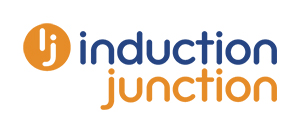Working around common pitfalls when considering e-learning as part of your digital learning strategy.
Let’s face it, sometimes when you mention the word ‘e-learning’ you are more likely to get an eye roll than a drum roll, as users shudder at the thought of the experiences they have had with e-learning.
Whilst a seemingly necessary evil, there are lots of ways e-learning can be improved by just paying heed to some of the reasons why it often fails. If you are on the brink of considering how e-learning could help you there are some common pitfalls here along with some ways that you can help avoid them. And by way of a clue – they all involve other people.
1. Know the purpose.
Knowing why you are choosing to introduce e-learning is a really important part of helping people see why they should engage with it. The rationale should be more than because it’s necessary to get some information out to people quickly and as inexpensively as possible to say we’ve done it.
It is typical, particularly with compliance related content, that there is just a need to communicate widely and sometimes remotely, the right way of going about a task or approaching a business process and actually using e-learning is often the most efficient way of doing that. If this is the case, articulate this and explain that by using this method it means more resource can be allocated to coaching, behavioural, career assessment and development, talent and succession management programmes etc (if it will be).
2. Use more pull than push.
When e-learning is seen as coming mainly from one part of the organisation, this can have a negative effect (depending on the reputation and relationships that part of the organisation has already). Whether being cascaded from the top or out from the HR Department in an ‘everyone help yourself’ way. These two strategies, which may be mistaken for sensible leadership and learning and development approaches, can also backfire.
At a risk of spending too much time, a few thoughtful conversations with internal customers before specifying the brief can help you start off on the right footing and create wider ownership. Involving them in drafting the specification, looking at short-listed options and procurement processes can be a more democratic way of encouraging personal responsibility for learning.
3. Put the support team in place.
Whether it’s failed login attempts, device or browser restricted content or frequent server failures, e-learning can pretty much cause a blown gasket when things break, and if you’ve rolled it out, guess where all the complaints come back to?
Ensure that the technical requirement of all content are understood and if you have an IT department, involve them early (because you will definitely need them onside). Ensure any content you purchase to place on your own Learning Management System or hidden part of your website is optimised to work on forthcoming browser versions, so you don’t come unstuck a few months down the line.
Reassure yourself of the support credentials of your shortlist of providers. Seek references from other satisfied customers and check that their HelpDesk opening hours coincide largely with your business hours.
4. Just add context.
There is a balance to be struck here between fully generic or bespoke courseware and there are growing amounts of off-the-shelf courses that allow for tinkering around the pre-formatted content to explain the ‘how it works here’. Perhaps you are of a culture where part of creating a learning environment could include giving skills to people to create or curate and share their own content?
The more content can resonate the more likely it will be engaging. This could include familiar environments, places, faces, internal references, or placing the learner at the heart of a scenario or centre stage within a virtual environment. Bespoke development for key content can make a lot more sense, and it’s not as expensive as you might think. At its most basic, simply topping and tailing with relevant scripting or video can go a long way. Pick your internal experts who exude your ideal attitude to front campaigns.
5. Don’t go it alone! Use an impartial broker.
One thing is for sure – whether you know where to start or not, once you do you will open the flood gates to numerous sales people and things to do so you do need to make sure your time and effort resources match. When this type of project is a stand-alone project, proper briefing, sourcing, due diligence, seeking demonstrations and taking references etc. risks being shortcut for pragmatic reasons. If you are not in control then the sales people will be – you may end up going for the best sold solution rather than the best suited solution.
If an extra pair of e-learning expert hands in your corner would help, then you could always work with a broker like us. We’ll help shape your brief, even if that means talking to internal stakeholders. We’ll have lots of questions to ask you to help you think about what you really need your solution to achieve for you, and we’ll go away and research the market based solely on your brief, whilst you get on with other stuff. We won’t need to shortcut, because we won’t be juggling this research with umpteen other conflicting priorities and staff meetings. We’ll then come back to you with a short-list of potential providers who meet your specification, laid out in a comparable report – and we’ll help you through the next steps too. Contact us to find out more.



